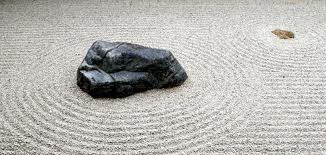 There is a philosopher named Justin E. H. Smith whose blog I sometimes read. Lately, he’s been studying Sanskrit, and so he recently wrote a composition in Sanskrit. I can’t read Sanskrit – I studied it for a few weeks a few decades ago, and I can barely even remember how to decipher the writing system. But I can sympathize with and relate to the idea of trying to write an interesting or creative composition in a language one is only just beginning to master – consider a few of the horribly bad and embarrassingly juvenile efforts I’ve made at putting up blog posts in Korean (which I won’t even link to here, because I’m too embarrassed).
There is a philosopher named Justin E. H. Smith whose blog I sometimes read. Lately, he’s been studying Sanskrit, and so he recently wrote a composition in Sanskrit. I can’t read Sanskrit – I studied it for a few weeks a few decades ago, and I can barely even remember how to decipher the writing system. But I can sympathize with and relate to the idea of trying to write an interesting or creative composition in a language one is only just beginning to master – consider a few of the horribly bad and embarrassingly juvenile efforts I’ve made at putting up blog posts in Korean (which I won’t even link to here, because I’m too embarrassed).
But in fact, in reading his translation back to English of his Sanskrit composition, I got to thinking. The composition – his little parable of the stone – is excellent. As is so often the case, operating within very tight constraints can lead to very good writing – in this case, the constraint of working in a language one doesn’t know well. I can’t judge the quality of the Sanskrit – perhaps it’s full of grammatical errors or mis-used vocabulary. But the English version is compelling. I will reproduce it here.
शिला
एकदासित् शिला । एतायाः शिलायाः पदाः न सन्ति स्म, न नेत्रेपि, न श्रवने, न लोमचर्मनम्, न वदनम् । शिला गन्तुं न शक्नोति स्म, प्रानितुं न शक्नोति स्म, खदितुं न शक्नोति स्म, न किं अपि कर्तुं शक्नोति स्म । परन्तु एतायाः शिलायाः जिवात्मन् अस्ति स्म । सातिवाकुशलिन्यासित् । एक्स्मिन् दिने पक्शिनि शिलायायाम् उपविशति स्म । पक्शिनि झटित्यनुभवत् यत् शिला जिवितासित् । सोक्तवति : “भो शिला” इति, “तव किं अभवत् । शिलाः केवलम् अजिवनि वस्तुनि सन्ति” । शिला प्रत्युक्तोवति : “धिक् ! अहं न जानामि किं मम अभवत् । अहं शिलास्मि । गन्तुं न शकनोमि । प्रानितुं न शक्नोमि । खदितुं न शक्नोमि । न किं चित् कर्तुं न शक्नोमि । अहं केवलम् वस्तुवस्मि । मया न जीतव्यम् । न जानामि अपि कुतः अहं विशयः एतायाः कथायाः अस्मि” इति । पक्शिनि उक्तोवति : “तद्विशये चिन्ता मस्तु । गन्तुं नातिव सु्नदरम् अस्ति । अहं च नितरम् बुबुक्शास्मि । तव जीवनम् सुलभम् अस्ति । त्वया केवलम् चिन्तयितव्यम् च ध्यनम् कर्तव्यम् च । भूमिः तव भार्यास्ति । चिन्तनम् तव भोजनम् अस्ति । सुन्दरम् एतत् जिवनम्” इति । एतैः शब्दैः पक्शिनि समुत्पतति स्म । शिला पुन एककिन्यासित् । कुशलिन्यासित् । सा तस्या भार्याम् अलिन्गति स्म च भोजनम् खदति स्म च । भक्शणम् कृत्वा प्रस्वपिति स्म च स्वपनम् पक्शगमस्य विशये करोति स्म च ।
The Stone
Once there was a stone. This stone had no feet, no eyes, no ears, fur, or face. It could not move, could not breath, could not eat, could not do anything at all. But this stone had a soul. It was very unhappy. One day a bird landed on it. The bird immediately sensed that the stone was alive. It said: “Hey, stone! What’s with you? Stones are only non-living things.” The stone replied: “What a pity! I don’t know what’s with me. I am a stone. I cannot move. I cannot breath. I cannot eat. I cannot do anything at all. I am only a thing. It is not for me to live. I do not even know why I am the subject of this story.” The bird said: “Don’t worry about it. Moving is not so wonderful. And I’m always hungry. Your life is easy. You just have to think and meditate. The earth is your wife. Thoughts are your food. What a nice life.” With these words the bird flew away. The stone was again alone. It was happy. It embraced its wife and had a meal. Having eaten, it went to sleep and dreamt of flying.
